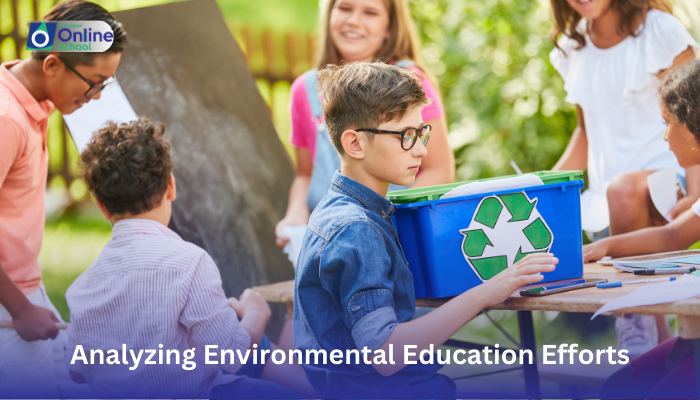
Learning Outcomes:
i. Identify the role of government departments and NGOs in promoting environmental education and awareness.
ii. Analyze the objectives and strategies used in different environmental education programs.
iii. Evaluate the effectiveness of various environmental education initiatives in fostering positive environmental behavior.
iv. Appreciate the role of individual action and collective responsibility in driving environmental change.
Introduction:
Imagine a world where everyone understands the importance of protecting our planet, where trees are cherished, rivers flow clean, and air is fresh. This world isn't a dream; it's the seed planted by environmental education. Today, we explore the fertile ground of environmental education initiatives, understanding how government departments and NGOs work tirelessly to nurture this seed, blossoming into a future where environmental awareness becomes the norm, not the exception.
i. The Guardians of the Green: Government Departments and Environmental Education:
Forestry departments: These dedicated teams organize tree-planting campaigns, raise awareness about deforestation, and educate communities about sustainable forest management. Imagine forestry officials leading school children in planting trees, their hands nurturing the seeds of future forests.
Environment protection agencies: These organizations spearhead awareness campaigns, monitor environmental quality, and educate the public about pollution control and waste management. Imagine billboards proclaiming "Reduce, Reuse, Recycle!" a testament to the agency's efforts to reach every corner of society.
Wildlife conservation agencies: These protectors of our biodiversity conduct educational programs on endangered species, organize wildlife sanctuaries, and raise awareness about the importance of protecting ecosystems. Imagine children learning about the fascinating world of birds through interactive workshops, sparking a lifelong love for nature.
ii. The Seed Scatterers: The Power of NGOs:
Environmental advocacy groups: These passionate organizations organize workshops, conduct research, and raise public voices on critical environmental issues like climate change and water conservation. Imagine young volunteers organizing beach cleanups, their hands collecting plastic debris and their voices chanting for a cleaner future.
Educational NGOs: These organizations develop and implement educational programs, train teachers, and provide resources to schools to integrate environmental education into the curriculum. Imagine classrooms buzzing with discussions about renewable energy, the seeds of sustainable thinking taking root in young minds.
Community-based organizations: These groups work closely with local communities, empowering them to understand and address environmental challenges faced in their specific regions. Imagine farmers learning about sustainable agricultural practices, their hands nurturing the land while protecting the environment.
iii. Measuring the Bloom: Evaluating Effectiveness:
Not all efforts bear the same fruit. Assessing the effectiveness of environmental education involves:
Impact on knowledge and attitudes: Do programs enhance environmental understanding and foster positive attitudes towards conservation?
Behavioral change: Do participants translate their knowledge into actions like reducing waste or adopting sustainable practices?
Long-term impact: Are the seeds sown early on nurtured and cultivated, leading to lasting environmental consciousness and action?
iv. Cultivating a Greener Future: Individual and Collective Responsibility:
Environmental education is a shared responsibility:
Individual action: Each of us can make a difference by adopting sustainable practices in our daily lives, from switching off lights to reducing our carbon footprint.
Collective action: Supporting environmental initiatives, volunteering for organizations, and advocating for responsible policies can create a powerful wave of change.
Empowering others: Sharing knowledge and inspiring others to adopt sustainable lifestyles can create a ripple effect of environmental awareness.
Environmental education is not just a subject in a textbook; it's the seed of hope for a greener future. By understanding the efforts of government departments and NGOs, appreciating the power of individual action, and fostering collective responsibility, we can nurture this seed into a flourishing forest. Let us become the gardeners of environmental awareness, tending to the seeds of change within ourselves and inspiring others to do the same. Remember, every action, however small, can contribute to a world where environmental protection is not a burden, but a cherished way of life.